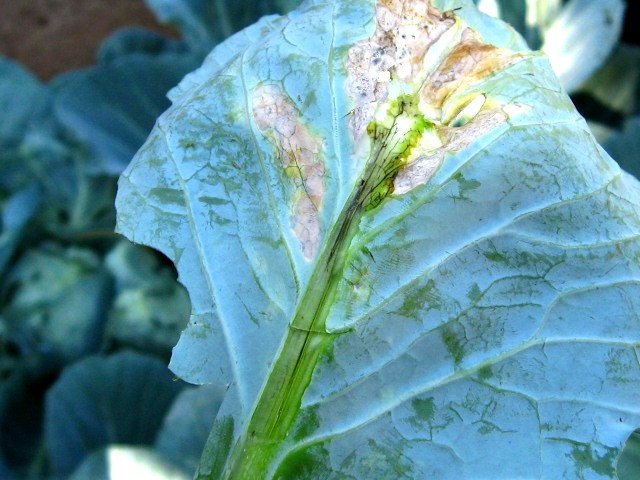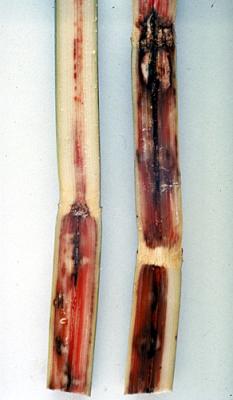Didymella bryoniae
Mycosphaerella citrullina
Phoma cucurbitacearum
Credits:Biovision-Infonet

(c) A.A. Seif, icipe

(c) Courtesy EcoPort (http://www.ecoport.org): Bureau of Sugar Experiment Stations, Queensland
Circular to irregular spots on leaves. On centres of the spots pycnidia (fungal fruiting bodies) develop. The spots may tear and drop out giving the leaves a tattered appearance. Crown and runners turn pale-brown and then crack oozing a reddish gum. The affected areas are studded with pycnidia. Runners may be girdled and die. Affected fruits exhibit black, leathery, sunken spots and under moist conditions pycnidia develop at the centres. On butternut squash, large irregular areas of the fruit become bronzed with distinct concentric rings. Fruits are spotted and rot. Infected fruits have no commercial value.
What to do:
- A long rotation (at least 2 years) with non-cucurbit crops.
- Good sanitation in the field is the best preventive control. Conditions conducive to the pathogen development should be avoided.
- An accurate monitoring of leaves is necessary to detect early infection and start sprays on time.
- Avoid building of high humidity in the field.